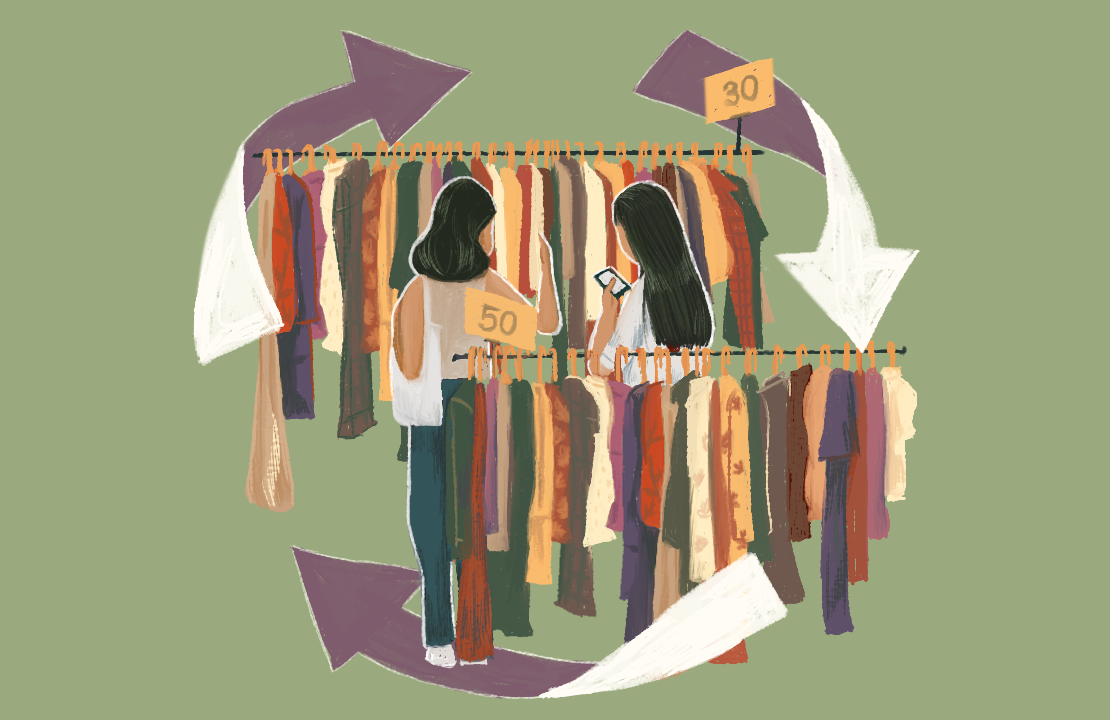Just recently, the city of Manila banned the selling of secondhand phones in order to prevent more stolen phones from being sold again. According to an article by Inquirer, Mayor Isko Moreno said that this is a measure that would stop robbers and snatchers around Manila if no one patronizes their scheme.
[READ: Manila bans selling of secondhand phones]On the other hand, the commercial importation of secondhand clothes or ukay-ukay has been illegal since 1966. As stated in Republic Act 4653, this is to protect consumers from the possible health risks that could be acquired from these preloved clothes. But this proves to be hard to regulate since shipments of clothing disguised as donations still make it past customs and into ukay-ukay shops.
Commercializing both pre-owned phones and clothes have brought other means of livelihood for some residents. Closing these down will not only affect them, but also the call towards saving the environment because buying preloved clothes is a more sustainable alternative and choosing to own a second phone puts a buffer on the demand for these electronic gadgets which vital parts consist of non-renewable mined metals.
It’s evident that our environment is suffering, which is why people are encouraged now more than ever to switch to sustainable ways or options of living.
Fast fashion
One of the highest contributing factors to ecological waste is fast fashion. It was reported in 2017 that the European textile industry generates textile waste estimated at 9.35 million tons per year. In 2015, a total of 10.5 million tons of textiles were also found in America to have ended up in landfills.
The Philippines, on the other hand, being one of the top importers in Asia has South Korea as its primary source as of 2017. As new trends in fashion emerge, most consumers opt to buy more clothes to achieve these looks.
Electronic waste
Another factor is consumerism that fuels demand for the newest models, prompting a delay to the production of these smartphones that require overseas labor, mining metals, etc. while older discarded units ultimately end up becoming electronic waste. In the data by the Global E-waste Monitor for 2017, approximately 50 million tons of e-waste per year is being discarded worldwide where only 20 percent is recycled.
The presence of this e-waste harms both the people and the environment. Its components not only pose a threat to our health like respiratory ailments but also the fact that it might be deposited in our landfills and release dangerous toxins when disposed improperly. This is why it’s strongly advised to properly dispose or at least reuse it to prevent more pollution.
[READ: How to dispose your gadgets properly? ]Circular economy
On a macro scale, the circular economy promotes sustainability because unlike how a linear economy works—that’s rooted in the presumption of unlimited natural resources—it allows for materials to be maximized.
For example, selling preloved clothes allows for more ways to use that clothing than buying new mass-produced ones. In this way, we’re not only saving money but also preventing more waste. Also, reusing old cellphones are better than throwing it away because some people can still use it. By donating your smartphones that are still in good condition, you help a person to have access to communication technology, especially at an affordable price. In terms of recycling, the parts can be recovered to make new products—like its metals and plastic components—or use it to make other defective gadgets work.
Moving towards a circular economy provides benefits for both the environment and the economy. By reusing or introducing a material back into the flow of economy, the production services are reduced prompting for lower sale prices that benefit the consumer and the business.
Recycling non-renewable e-waste such as electronics and batteries bring them back into the production cycle to be used for other means. It’s a way to reduce the pressure on the environment and to promote sustainability by securing the supply of our raw materials that will help the country in the long run.
Taking away these secondhand goods affects not only the people who are dependent on it but most importantly, it disrupts the flow of the circular economy, thus taking a toll on the environment. These secondhand options benefit the people, the economy, and the environment—hitting three birds in one stone. Unless the government and corporations can provide more long-term and large scale sustainable solutions, what other choices can conscious consumers resort to?
Get more stories like this by subscribing to our weekly newsletter here
Read more:
Legalizing ukay-ukay can help save the planet
Tela’s retail line is made from Bayo’s excess fabric
LOOK: Photographer turns e-waste into post-apocalyptic landscapes
Writer: GABRIELLE PARLADE
ART CLARISSE ALFONSO




